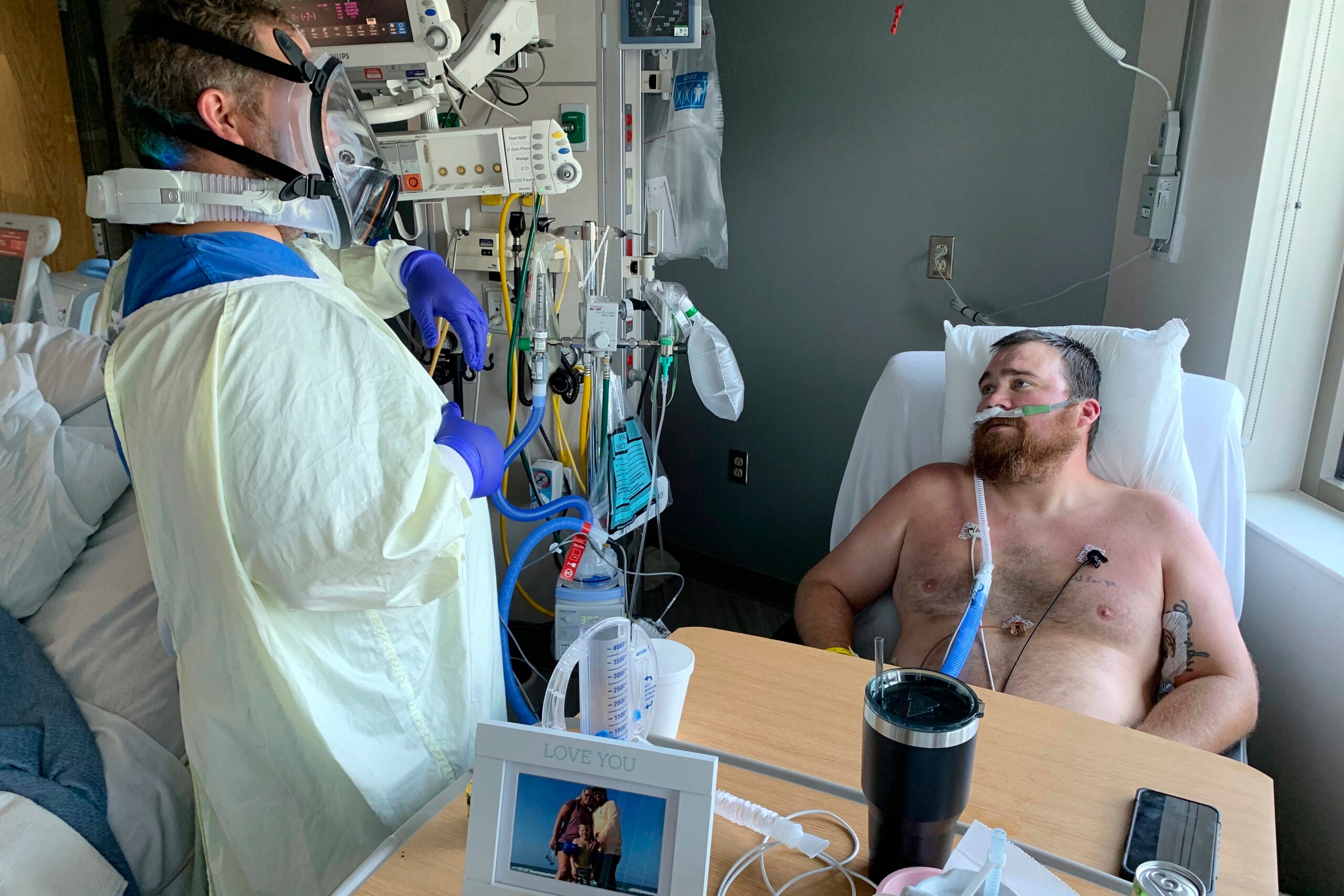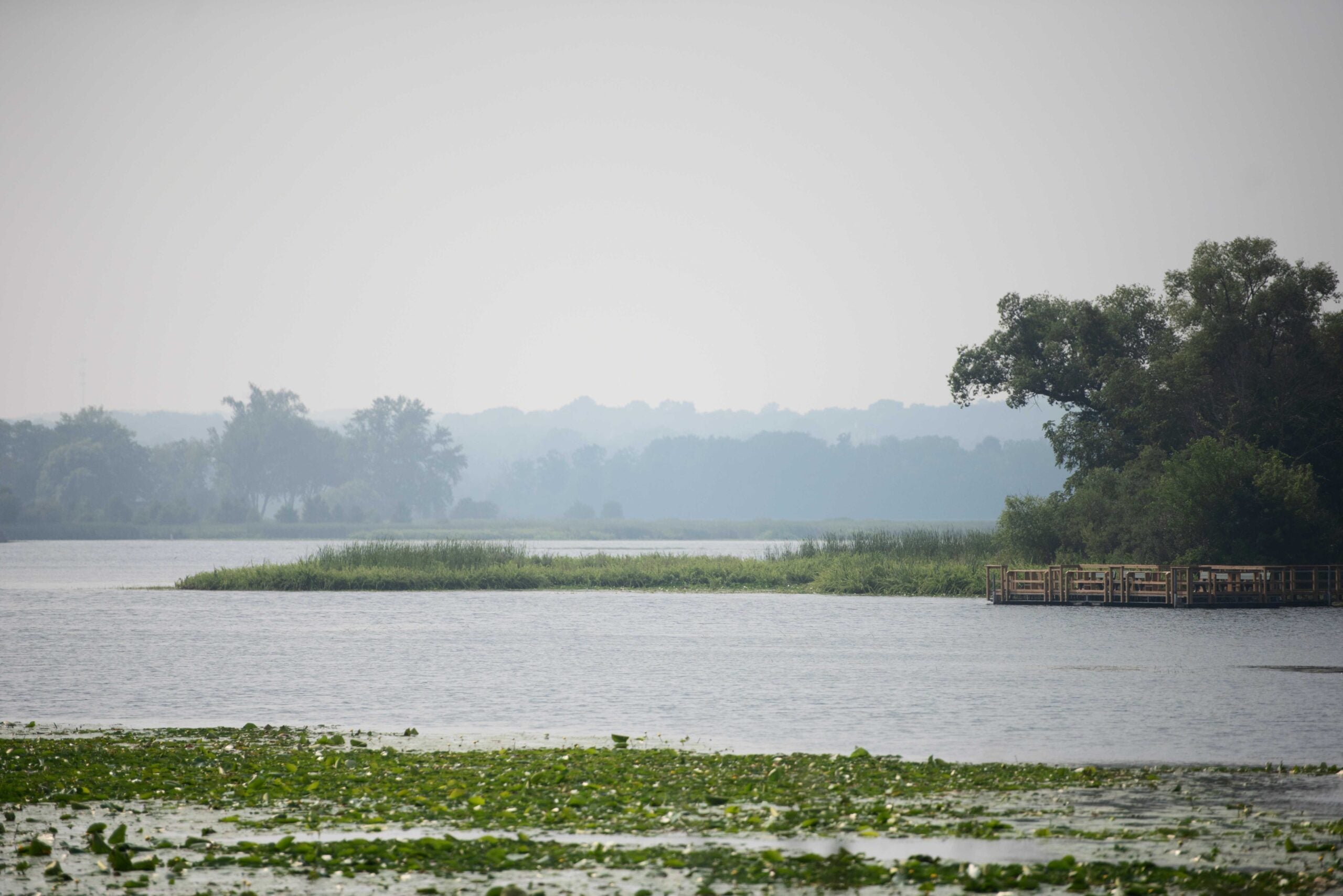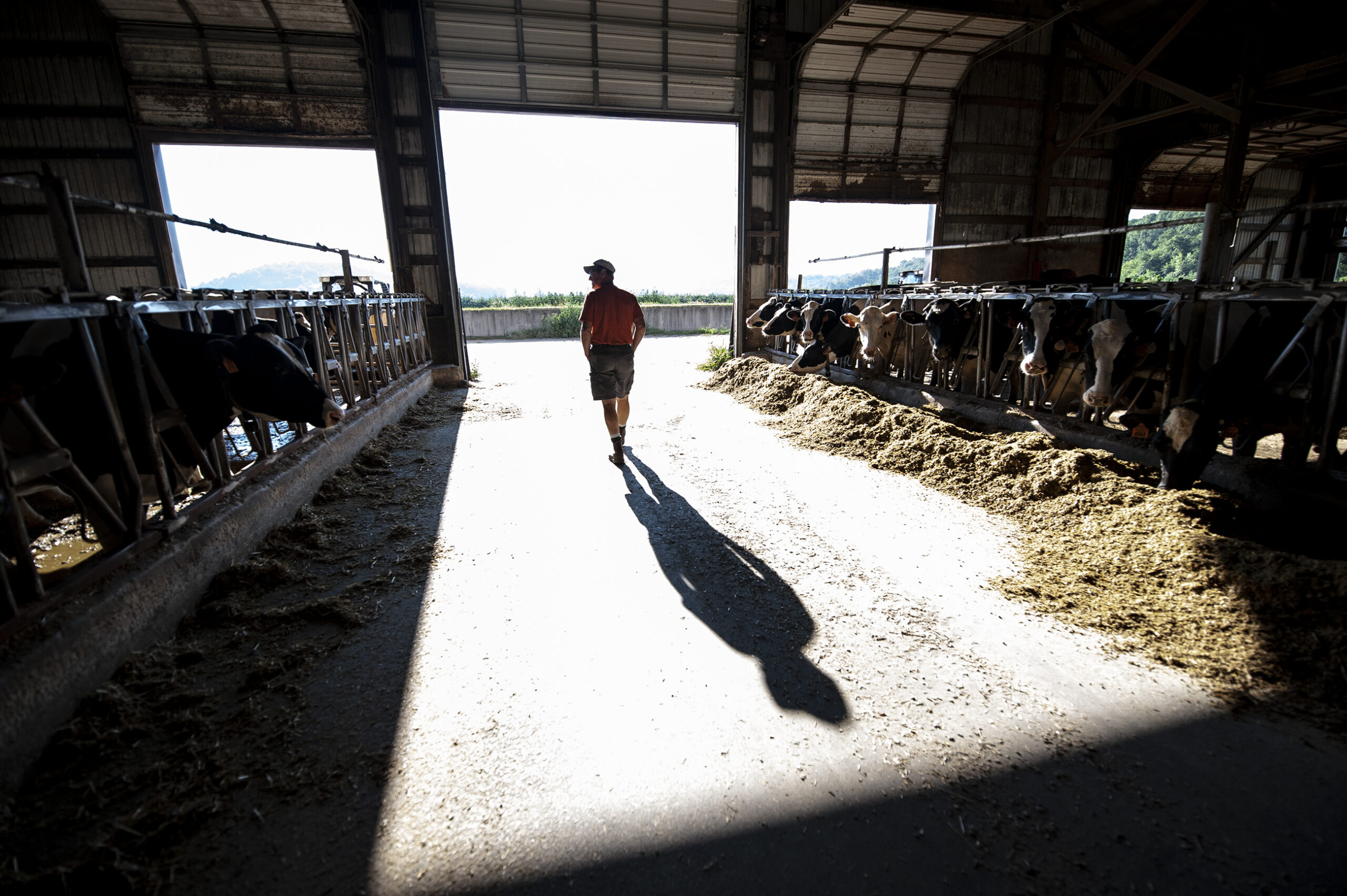In the midst of a pandemic known for attacking the respiratory health of its victims, the wildfires burning across Canada and the West Coast are yet another reason to pay attention to our lung health.
Even one of the treatments for such respiratory problems — being on a ventilator — can cause lasting effects or irritation and inflammation, said Sarah Brundidge, a registered respiratory therapist and president of the Wisconsin Society for Respiratory Care.
“Our lung tissue is very fragile,” she said, especially when it comes to tiny particles, such as those contained in wildfire smoke, that can embed themselves within the deepest and most fragile parts of our lungs.
News with a little more humanity
WPR’s “Wisconsin Today” newsletter keeps you connected to the state you love without feeling overwhelmed. No paywall. No agenda. No corporate filter.
Brundidge, who with her colleagues has been working overtime as the respiratory health industry has gone on the defense against COVID-19 and now against wildfire smoke inhalation, stressed the importance of paying attention to the air quality index.
The index, which measures ozone, particle pollution, carbon monoxide, sulfur dioxide and nitrogen dioxide, categorizes air quality in six stages, from good to hazardous.
Brundidge said on days when the air quality is bothersome, it might help to run the home’s air conditioner, which can filter out some of the problem particles.
Here are some other tips she offers for taking care of your respiratory system in your own home environment, especially for those with preexisting conditions.
Search Your Home For Asthma Triggers
The American Lung Association keeps a checklist of items in the home that could cause respiratory problems for those with asthma. Brundidge said that carpet in particular harbors dust and dust mites, which can make asthma symptoms much worse.
She recommends buying dust mite mattress and pillow covers, especially because you’re breathing in those particles for several hours every day. She also said taking a shower before bed ensures you’re not bringing pollen and dirt into bed with you.
Don’t Worry About Duct Cleaning
Brundidge said unless you look inside your ducts and see a large accumulation of dust, getting your ducts cleaned isn’t really going to provide much benefit. She suggested changing your furnace filters more often or getting thicker filters as potentially more helpful.
Look At Air Filter Specifications
Air filters can certainly help, but they can also be a hindrance, Brundidge said. If you buy a standing air filter, make sure it doesn’t create an ozone as a byproduct of its use. That ozone can kill bacteria, but it’s also a major irritant, she said.
Practice Belly Breathing
Although there’s a lot out of our control when it comes to environmental issues and our lung health, we can help our bodies out by becoming better belly breathers, Brundidge said.
Belly breathing means that you’re breathing in such a way as to contract the diaphragm, which moves down and allows more air into the lungs and oxygen into the system. There are plenty of reasons why people opt for shallow breathing, which doesn’t engage the diaphragm. It could be because of tight clothes, bad posture or even gender.
“If you watch men breathe, they tend to breathe with their diaphragm and belly, which is the most efficient, true, correct way to breathe,” Brundidge said, noting that historically, in an effort to look slim, women have relied more on shallow breathing.
Brundidge said when she’s coaching people to breathe, she tells them to lay in bed and put their hand on their abdomen. Then, she asks them to take a breath in through their nose and try to slowly move their belly out as they breathe.
Wisconsin Public Radio, © Copyright 2026, Board of Regents of the University of Wisconsin System and Wisconsin Educational Communications Board.






